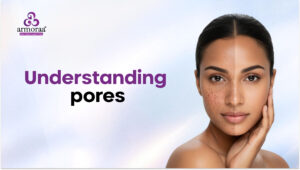Hair serum is one of those miraculous hair products that can fix a slew of hair problems, from frizz to dryness, while also providing plenty of other advantages to our long and silky locks. We’re talking about pollution resistance, increased luster, increased strength, and more. Wondering how hair serum works? So what are these hair serums that everyone raves but no one really understands how to use it? Questions like: Is it actually necessary to use hair serum? How often can you use these serums? The damages these serums can cause? We have answers to all your questions and more, keep reading to find out.
But before we move further, we need to establish that your hair texture is different and one product or brand that might work on your hair might not necessarily work on someone else’s. So you need to find a product that suits your hair type and target the issue that you are trying to find a solution for. Before understanding the different hair serums, let’s acknowledge what exactly is a hair serum.
What are hair serums? What do they do?
Hair serums are a simple way to cure some of the most frequent but serious hair issues. This silicon-based product covers your hair’s surface, enhancing its gloss and texture. Hair serums serve to protect the hair shine by protecting it from heat, UV damage, and pollution. Hair serum softens hair and protects it from breakage and split ends. Detangling your hair is no more stressful!
The hair serums come in handy for styling purposes. So we recommend going the extra mile for your hair care routine. After shampoo and conditioner, use a tiny amount of serum on clean, wet hair and avoid the roots. Don’t go applying a whole lot on your hair, especially unclean hair.
What is this hair serum made of?
Most of today’s hair serums are silicone-based. If you are thinking, isn’t silicone bad? Well, not exactly! Silicones are sourced from sandstone, or beach sand, and are the world’s second most abundant element. In the human body, it is the third most prevalent trace element. Silicone aids in the reduction of hair loss and the enhancement of radiance. How does it leave a bright, smooth finish? Silicone fills up porosity. Hair porosity is your hair’s ability to absorb and retain moisture.
Silicone is the base component in hair serums, and the different types of silicon serve differently.
- Dimethicone is a non-water-soluble silicone that may be found in most hair serums and helps reduce dryness and frizziness.
- Siloxy silicates in the serums give your hair more volume and leave your hair smooth and soft.
- Polysiloxane polymers is an ingredient that can re-cement the raised cuticle and protect it from heat damage.
- Cyclomethicone and dimethicone copolyol are water-soluble silicones that have no build-up on your hair but still coat and protect the hair.
It is advisable to go for water-soluble silicones in your hair serums as you would not have to worry about the residue that it leaves behind.
Aside from silicone, hair serums and creams include protein hydrolysates, silk protein, Brazilian nut, passion fruit, palmolein oil, mineral oil, ceramides, and vitamins E and B. Wheat, maize, and soy are sources of non-animal free amino acids. Argan oil may be found in a variety of hair serums and treatments that moisturizes hair, eliminates frizz, boosts shine, and protects against the sun.
Can everyone use hair serums?
Yes, hair serums are safe for everyone. But it is important to know if the serum suits your hair and aids your needs. Serums can be used before you leave the house to protect from the strong UV rays, or just before styling to get a finished look. You should use a heat protectant serum before using any heat styling tools so that the damage from these tools is reduced. Always be mindful of the quantity that you might be using on your hair. Definitely try to use serums over creams if you have thin hair.
How different is it from a leave-in conditioner?
The ingredients are almost the same in the hair serum and the leave-in conditioner. However, the leave-in conditioner has a higher percentage of petrolatum to provide moisture and shine. Leave-in conditioners are mostly used by those with curly, unmanageable hair, chemically treated hair, and thin, less volume, silky hair before styling and blow-drying. When used by people with thin, less volume, silky hair, it may weigh down their hair.
Is there a right way and time to apply the hair serum?
Yes, there is a right time to apply the hair serum. We are not referring to bedtime or daytime or a particular time of the day, we are talking about after your shampoo on damp hair. It is because of this property that the serum has to protect your hair from other harmful environmental components like pollution and sun rays.
For application of hair serum, there are 3 steps that you should follow.
- It is already established that hair serums need to be applied to clean and damp hair.
- Squeeze a drop or two for thin and short hair and five or eight drops for thick, curly, long hair on to your palms. Warm the serum by rubbing your palms for about 5 seconds.
- Start rubbing the serum on the ends and work your way up to the mid-section and avoid the roots.
Remember these don’ts while using the serums
- Gently brush your hair with your hand, but avoid pulling the hair too hard.
- Don’t use a brush to comb through your hair, rather use a wide toothed comb, which will help spread the serum evenly on to the hair.
- The saying ‘less is more’ would be apt here. Applying too much serum only makes things worse, use only the required quantity.
All this while, your hair missed one key product in your everyday routine – hair serum. Hair serums do not promote the magic brew to cure hair fall or hair thinning or hair growth. But it could be your go to stylist for parties and special occasions. Don’t try to find an all in one type of serum but look at something that would actually suit your hair type and texture. We hope this blog helps you find the right product for your hair type!




